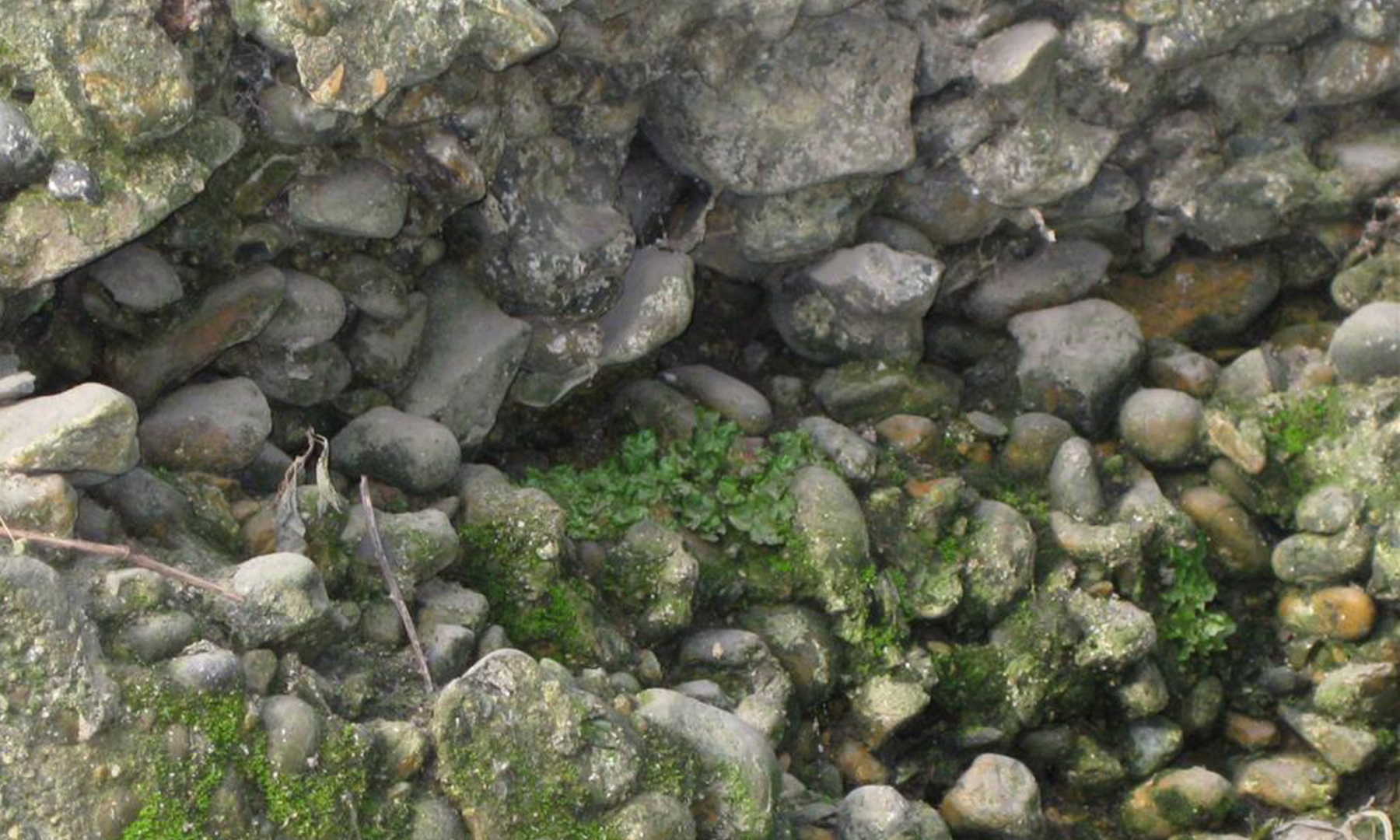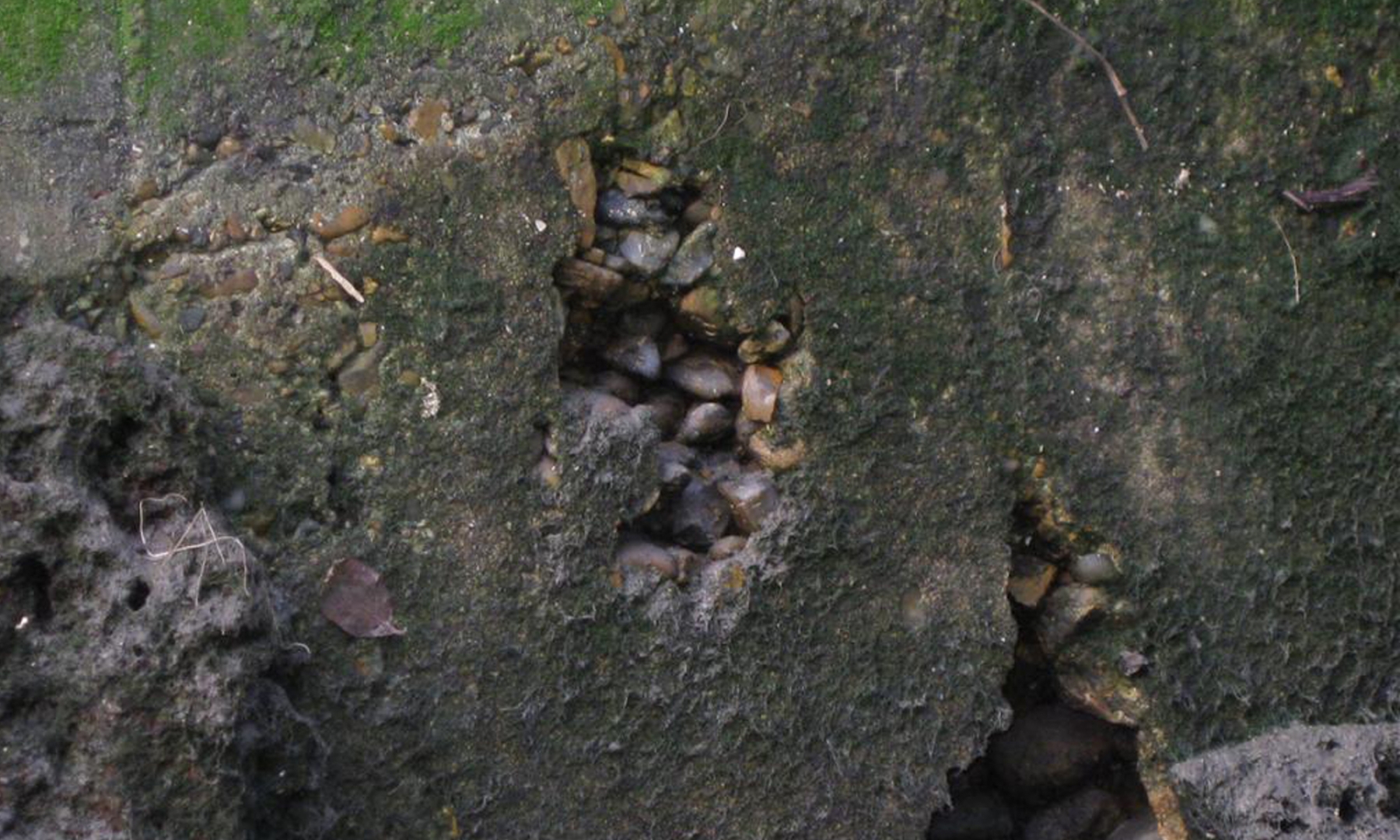After clearing out the silt and rubbish, we spent November inspecting the metalwork and concrete along the walls and making any repairs that were needed.
To do this we put scaffolding down into the lock so we could get right up to the walls to see if sixty years underwater had done damage. Where the concrete was stained, it meant that water had seeped through to the metal reinforcing bars inside and started rusting them. We cut back into the concrete until we reach the rebar, checked it, treated it for rust, and filled in the gaps.




